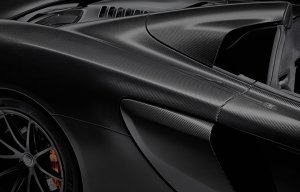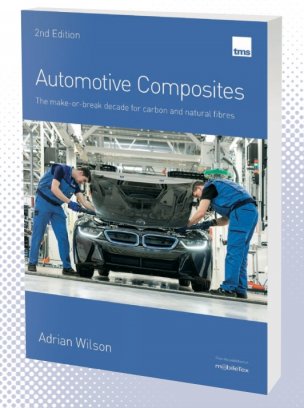
Scaling-up carbon fibres to move the needle for automotive
Automotive Composites: The make-or-break decade for carbon and natural fibres, is a new report from Textile Media Services to be published in September 2015, which reviews the use of composites in the automotive sector and assesses how far these materials are from being used in mass vehicle production.

26th August 2015
Innovation in Textiles
|
United Kingdom
Fibre-based composites are becoming increasingly important in the manufacture of automotive components. These new materials look set to continue their penetration of the automotive sector, and their large-scale use in mass-production cars, trucks and other vehicles is being widely predicted.
Automotive Composites: The make-or-break decade for carbon and natural fibres, a new report from Textile Media Services to be published in September 2015, reviews the use of composites in the automotive sector and assesses how far these materials are from being used in mass vehicle production.
It includes detailed analyses of the production and markets for carbon fibres, glass fibres and natural fibres, and profiles of leading suppliers of these input materials.
The global composites industry - around 90% of which is currently glass fibre-based - is now worth an estimated Euro 80 billion, and over the past five years, automotive and transportation has grown to become its biggest sector by tonnage.
Composite materials have been used for non-structural car parts since the 1950s. In recent decades, automotive interiors have been increasingly produced from thermo-plastics, with semi-structural parts now widely made from thermoset composites.
In the aircraft, boat building and racing/sports car sectors, the use of carbon fibre composites has grown rapidly in recent years. In the aerospace industry, for example, carbon fibre-based composite parts in the aircraft body now account for more than 50% of the total weight of the latest models, such as the Airbus A380 and Boeing 787 Dreamliner.
In general, composite materials are lighter in weight than steel or aluminium, which provides engineers with a lightweight alternative for use in a wide range of automotive structures and components. High strength and lighter weight leading to better fuel efficiency are the key benefits that composites offer the automotive sector; greater design flexibility, enhanced aesthetics and improved durability are other advantages.
But there are several reasons why advanced composites have not been more widely adopted by the automotive industry. The key stumbling block is price, while the availability and future supply of carbon fibres is another issue that is being addressed by fibre producers.
Many companies, from carbon fibre suppliers through to original equipment manufacturers (OEMs), are now entering the market, with a wave of partnerships and joint ventures announced over recent months. Meanwhile, there are on-going attempts to replace glass fibre with natural fibres, such as flax and hemp.
The burning question preoccupying the automotive industry is just how far carbon can succeed in replacing today’s metal structures.
Company profiles
The report features profiles of leading suppliers and users of carbon, glass and natural fibres, including:
Lamborghini McLaren, BMW, Toray Industries, Toho Tenax, Mitsubishi, SGL, Hexcel, Zoltek, Owens Corning, Johns Manville, 3B, PPG Industries, AGY, EcoTechnilin, Borgers, AFT Plasturgie.
Buy this report
PDF format (also available in print format here)
Automotive Composites: The make-or-break decade for carbon and natural fibre
Publication date: September 2015
Publisher: Textile Media Services
Price: £495 GBP
To order by credit card via PayPal, please select the button below. Alternatively, please contact us and we will invoice accordingly and send the publication by email at publication date and upon receipt of payment. Please contact us at [email protected] for pricing details of print format plus PDF version.
All UK customers and non-VAT registered EU customers must add £79 GBP to the price, which represents 20% VAT for a PDF. Please contact us for prices of multi-user and site licences, and for purchasing a print+PDF package.

Business intelligence for the fibre, textiles and apparel industries: technologies, innovations, markets, investments, trade policy, sourcing, strategy...
Find out more